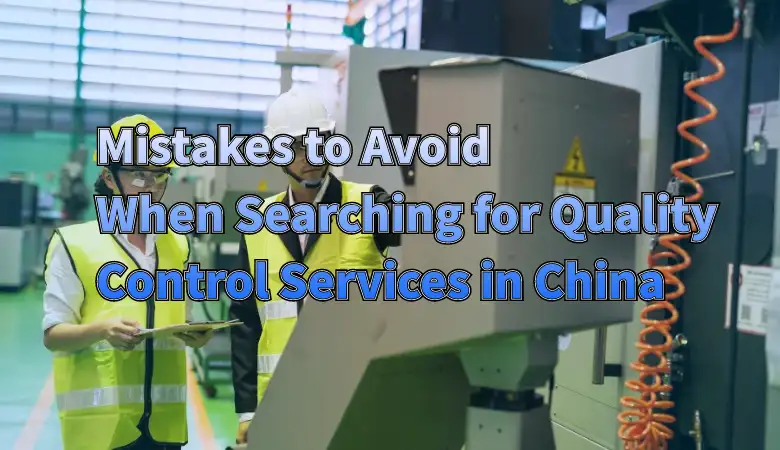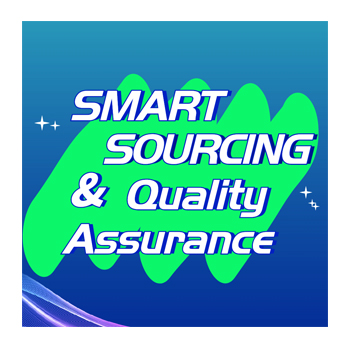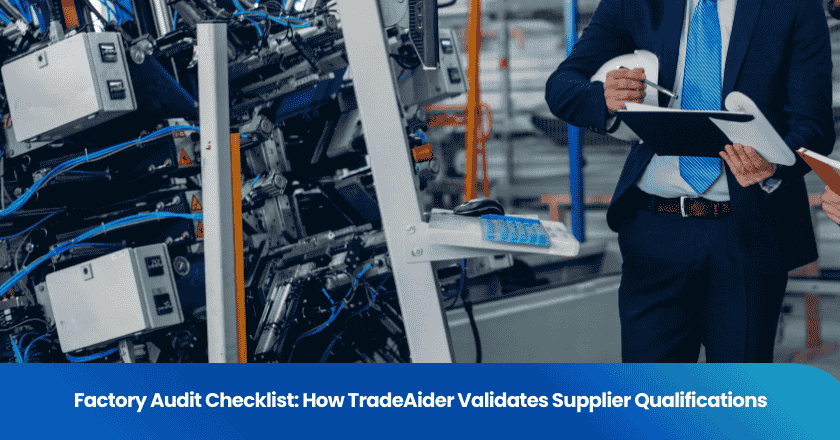
Poor quality control management can lead to disastrous outcomes for your business. Faulty products, missed deadlines, and unhappy customers can quickly erode customer trust. When sourcing products from China, you need a reliable quality control service to ensure everything meets your standards. Without it, you risk losing money, time, and your reputation.
Choosing the right partner for quality control management isn't just about checking boxes. It’s about protecting your brand and delivering consistent quality. Avoiding common mistakes in this process can save you from costly setbacks and help you build a stronger, more dependable supply chain.
Ignoring Local Expertise
The Importance of Local Knowledge
Understanding Chinese regulations and compliance standards
When working with suppliers in China, understanding local regulations and compliance standards is crucial. These rules can vary widely depending on the industry and region. Without this knowledge, you risk non-compliance, which can lead to fines, shipment delays, or even product recalls. For example, a consumer electronics brand that standardized quality across suppliers in China saw a 30% reduction in defective units. This success came from aligning with local standards while maintaining global quality expectations.
Local expertise ensures your products meet these requirements from the start. It also helps you avoid costly mistakes that could damage your reputation.
Overcoming cultural and language barriers
Cultural and language differences can create significant challenges in quality control management. Misunderstandings can arise when instructions or expectations aren’t clearly communicated. This is where local expertise becomes invaluable. Professionals who understand the nuances of Chinese business culture can bridge these gaps effectively.
For instance, a fashion company consolidated quality control across multiple factories in China. By leveraging local expertise, they achieved a 25% reduction in product returns and improved customer satisfaction. This highlights how understanding cultural dynamics can lead to better outcomes.
How to Find Reliable Local Expertise
Partnering with experienced quality control professionals
Finding the right partner for quality control service in China requires careful consideration. Look for professionals with a proven track record and a deep understanding of local regulations. Providers who combine local expertise with international standards are often the most reliable. They can offer services like pre-production, during-production, and pre-shipment inspections to ensure consistent quality.
Additionally, advanced technology and tools play a significant role. Providers using digital reporting and automated inspection systems can deliver more accurate results. This not only improves efficiency but also gives you real-time insights into the inspection process.
Ensuring inspectors have in-depth regional knowledge
Inspectors with regional knowledge are better equipped to identify potential issues specific to the area. For example, an electronics assembly plant in China used statistical analysis to detect solder bridge issues. This led to targeted interventions and improved product reliability.
When evaluating potential partners, check their credentials, certifications, and client testimonials. A strong track record and positive feedback from previous clients are good indicators of reliable quality control expertise. Transparent communication and detailed reporting are also essential for building trust and ensuring accountability.
Overlooking Transparency
Why Transparency Matters in Quality Control
Risks of unclear communication and reporting
Transparency is the backbone of effective quality control management. Without it, you're left guessing about the status of your products. Unclear communication can lead to misunderstandings, delays, and even defective goods reaching your customers. For instance, language and cultural differences often create communication barriers, making it harder to convey your expectations to the quality control team.
Another common issue is inconsistent quality standards. When inspection methods vary, the results become unreliable, leaving you unsure about the actual quality of your products. Late reporting also disrupts production timelines, causing unnecessary stress and financial losses. Imagine waiting for an inspection report only to find out it’s too late to address the issues.
Tip: Always prioritize clear and timely communication with your quality control service to avoid these pitfalls.
Lack of visibility into quality control inspection service processes
When you don’t have visibility into the quality control processes, it’s like flying blind. You can't identify inefficiencies or gaps, which makes it impossible to improve. Hidden costs and budget overruns are another risk. These often arise from unexpected issues that could have been avoided with better transparency.
Resistance to process improvement is another challenge. Some providers may hesitate to adopt new practices, leaving you stuck with outdated methods. This lack of openness can hinder your ability to ensure consistent quality.
Ensuring Transparency in Quality Control Services
Requesting detailed and timely inspection reports
To ensure transparency, always request detailed inspection reports. These reports should include clear data on what was inspected, any defects found, and the actions taken to address them. Real-time data sharing can also be a game-changer. It allows you to monitor the inspection process as it happens, giving you the confidence that everything is on track.
Statistical tools like the chi-square test can help identify critical control points in manufacturing. By analyzing deviations between expected and observed outcomes, you can implement targeted interventions to reduce defects. Over time, this data-driven approach supports continuous improvement and enhances your overall quality control management.
Establishing clear communication protocols
Setting up clear communication protocols is another way to boost transparency. Define how and when updates will be shared, and make sure everyone involved understands these guidelines. Open discussions about inefficiencies and gaps can foster a culture of quality, improving both performance and accountability.
Monitoring trends over time is also essential. By analyzing recurring defects and their root causes, you can predict potential issues before they escalate. This proactive approach allows you to make adjustments to your production and sourcing practices, ensuring smoother operations.
Note: Transparency isn't just about avoiding problems. It’s about building trust and creating a partnership that benefits both you and your quality control service provider.
Focusing Solely on Cost
The Risks of Prioritizing Low Costs
Compromising on the quality of service
When you focus only on cutting costs, you often sacrifice the quality of service. Low-cost providers may lack the resources or expertise to deliver thorough inspections. This can lead to missed defects, subpar products, and unhappy customers. Imagine receiving a shipment of goods that fail to meet your standards. The time and money spent fixing these issues can far outweigh the initial savings.
Quality control management isn't just about checking boxes. It’s about ensuring your products meet both your expectations and your customers’ needs. A cheap quality control inspection service might seem like a good deal at first, but it often comes with hidden risks. Poor inspections can result in defective products reaching the market, damaging your reputation and customer trust.
Hidden costs associated with poor inspections
Low-cost services often come with hidden expenses. For example, you might face higher costs due to product recalls, returns, or repairs. These issues can disrupt your supply chain and delay deliveries. Over time, the financial impact of these problems can be significant.
Other hidden costs include the loss of customer loyalty and employee morale. When customers receive defective products, they’re less likely to buy from you again. Similarly, employees may feel frustrated dealing with the fallout of poor-quality goods. These intangible factors can hurt your business in ways that aren’t immediately obvious.
Balancing Cost and Quality
Evaluating the value of reliable quality control services
Instead of focusing solely on cost, consider the value a reliable quality control service can bring to your business. Reliable providers invest in skilled inspectors, advanced tools, and efficient processes. These investments ensure accurate inspections and consistent quality.
Think of it this way: spending a bit more upfront can save you from costly mistakes down the line. Reliable quality control services help you avoid defective products, reduce returns, and maintain customer satisfaction. They also provide detailed reports and real-time updates, giving you full visibility into the inspection process.
• Long-term value: Strategic investments in quality control management may not yield immediate financial returns, but they offer long-term benefits.
• Intangible benefits: Reliable services improve customer loyalty and employee satisfaction, which are crucial for sustained success.
• Strategic decision-making: Align your quality inspection measures with your long-term goals to balance cost and quality effectively.
Investing in long-term quality assurance
Quality assurance is an investment in your business’s future. By partnering with a reliable quality control service in China, you can ensure consistent product quality and build a strong reputation. This approach not only saves money but also strengthens your brand.
Long-term quality assurance involves more than just inspections. It includes continuous improvement, feedback loops, and collaboration with your suppliers. These practices help you identify and address issues early, reducing the risk of costly mistakes. Over time, this proactive approach leads to better products, happier customers, and a more efficient supply chain.
Tip: Don't just look at the price tag. Consider the overall value and long-term benefits of investing in quality control management.
Neglecting Technology and Tools
The Role of Technology in Quality Control
Advanced tools for accurate and efficient inspections
Technology has transformed quality control management, making inspections faster and more precise. Advanced tools like AI-powered systems can detect defects with incredible accuracy, reducing human error. For example, automated visual inspection systems use AI to identify even the smallest flaws in products, ensuring higher quality standards. These tools not only improve efficiency but also save time and labor costs.
Automation has also revolutionized inspections. By automating repetitive tasks, you can free up your team to focus on strategic activities. This boosts productivity and ensures consistent results. Continuous learning algorithms take it a step further by adapting to changing conditions, improving quality control processes over time.
Real-time data sharing and reporting capabilities
Real-time data sharing is a game-changer in quality control management. It allows you to monitor inspections as they happen, giving you immediate insights into potential issues. This means you can address problems before they escalate, saving time and money.
AI also plays a crucial role here. It analyzes complex data sets and identifies subtle patterns that traditional methods might miss. Predictive maintenance powered by AI can even prevent equipment failures by analyzing sensor data. This minimizes production disruptions and ensures smoother operations.
Tip: Embrace real-time reporting to stay ahead of potential issues and maintain consistent product quality.
Choosing a Quality Control Service with Modern Tools
Verifying the use of up-to-date technology
When selecting a quality control service in China, make sure they use modern tools. Outdated technology can lead to inaccurate inspections and missed defects. Ask potential providers about the tools they use and how these tools enhance their inspection processes.
For instance, AI-powered systems and automated inspections should be part of their toolkit. These technologies improve accuracy and efficiency, ensuring your products meet the highest standards. Providers who invest in advanced tools demonstrate their commitment to delivering reliable results.
Ensuring compatibility with your business systems
It's not just about having the latest technology. The tools your quality control service uses should also integrate seamlessly with your business systems. Compatibility ensures smooth data sharing and reporting, making it easier for you to monitor quality control processes.
Look for providers who offer customizable solutions. This flexibility allows you to align their services with your specific needs. For example, real-time data sharing can help you track inspections and make informed decisions quickly. By choosing a provider with compatible tools, you can streamline your operations and improve overall efficiency.
Note: Modern technology isn't just a luxury—it's a necessity for effective quality control management.
Skipping Due Diligence
Why Due Diligence is Essential
Verifying credentials, certifications, and experience
Skipping due diligence can lead to costly mistakes. Verifying the credentials, certifications, and experience of a quality control inspection service is a critical step. It ensures you're working with a legitimate and capable partner.
Here's why this matters:
• Risk Mitigation: Confirming a company’s legitimacy helps you avoid fraud, counterfeit operations, and supply chain disruptions.
• Quality Assurance: Verified providers are more likely to meet quality standards, which means better products and happier customers.
• Informed Decision-Making: A thorough check gives you insights to negotiate better terms and create strong contracts.
Taking the time to verify these details protects your business and ensures smoother operations.
Checking reviews and references for reliability
Reviews and references are like a window into the past performance of quality control providers. They reveal how reliable and efficient a provider has been for other businesses. Look for reviews that highlight their ability to meet deadlines, communicate effectively, and deliver consistent results.
Don't just stop at online reviews. Reach out to their previous clients if possible. Ask about their experience with the provider. Did they face any issues? How were those issues resolved? This step gives you a clearer picture of what to expect.
Steps to Conduct Proper Due Diligence
Conducting factory audits and site visits
Factory audits and site visits are essential parts of due diligence. They allow you to see the operations of a quality control service firsthand. During an audit, you can evaluate their processes, equipment, and adherence to quality standards.
A site visit also helps you assess the working conditions and professionalism of their quality assurance team. For example, you can check if they use modern tools and follow proper inspection protocols. This hands-on approach ensures you’re partnering with a provider who can meet your expectations.
Comparing multiple quality control inspection service providers
Don't settle for the first provider you come across. Comparing multiple inspection service providers gives you a broader perspective. It helps you identify the one that aligns best with your needs.
By following these steps, you can make an informed decision and choose a provider who adds real value to your quality control management.
Tip: Due diligence isn't just about avoiding risks. It’s about building a partnership with a provider who shares your commitment to quality.
Failing to Establish Clear KPIs
The Importance of KPIs in Quality Control
Measuring performance and ensuring accountability
Key Performance Indicators (KPIs) are like a compass for your quality control management. They help you measure how well your processes are performing and ensure everyone stays accountable. Without clear KPIs, it’s hard to know if your quality control efforts are actually working. For example, tracking defect rates or inspection timeliness can reveal whether your quality control service is meeting expectations.
KPIs also create a sense of responsibility. When everyone knows what’s being measured, they’re more likely to stay focused on delivering results. This accountability ensures that your team and your quality control provider in China are aligned in their efforts to maintain high standards.
Aligning expectations between all parties involved
Clear KPIs act as a bridge between you, your suppliers, and your quality control service. They align everyone’s expectations, reducing misunderstandings and ensuring smooth collaboration. Imagine setting a KPI for defect rates at less than 2%. This gives your quality control team a clear target and helps your suppliers understand what’s expected.
When expectations are aligned, it's easier to identify and address issues before they escalate. This proactive approach not only improves product quality but also strengthens your relationships with all parties involved.
How to Set Effective KPIs
Defining measurable and realistic quality goals
Setting effective KPIs starts with defining goals that are both measurable and realistic. Vague objectives like “improve quality” won’t cut it. Instead, focus on specific targets, such as reducing defect rates by 10% within three months. Using the SMART framework—Specific, Measurable, Achievable, Relevant, and Time-bound—can help you create clear and actionable KPIs.
For instance, if you’re working with a quality control service in China, you might set a KPI for inspection accuracy at 95%. This ensures your provider uses precise methods to catch defects. By setting measurable goals, you can track progress and make data-driven decisions to improve your quality control management.
Regularly reviewing and updating KPIs for continuous improvement
KPIs aren't a “set it and forget it” tool. Regular reviews are essential to ensure they remain relevant and effective. As your business evolves, your quality goals might change. For example, if you introduce a new product line, you’ll need to update your KPIs to reflect the unique quality requirements of that product.
Continuous feedback loops play a key role here. By analyzing data and gathering input from your team and quality control provider, you can identify areas for improvement. This iterative process ensures your KPIs stay aligned with your business objectives and drive ongoing improvements in quality control management.
Tip: Treat KPIs as a living document. Regular updates keep them aligned with your goals and ensure they remain a valuable tool for driving quality improvements.
Overlooking Pre-Production and Continuous Improvement
The Value of Pre-Production Inspections
Requesting pre-production samples for evaluation
Pre-production inspections are like a sneak peek into your product’s future. By requesting pre-production samples, you can evaluate the quality before mass production begins. This step helps you catch potential issues early, saving you from costly mistakes later. Imagine receiving a sample and noticing a design flaw. Fixing it at this stage is much easier than dealing with a full batch of defective products.
Pre-production samples also give you a chance to test the functionality and durability of your product. For instance, if you’re sourcing electronics from China, you can ensure the components meet your specifications. This proactive approach strengthens your quality control management and sets the stage for a smoother production process.
Defining clear product specifications with suppliers
Clear communication with your suppliers is essential. Defining detailed product specifications ensures everyone is on the same page. These specifications should include materials, dimensions, tolerances, and any other critical details. When your supplier knows exactly what you expect, they’re less likely to make mistakes.
For example, if you’re manufacturing textiles, specifying fabric type, thread count, and color codes can prevent misunderstandings. This clarity not only improves the quality of your products but also builds trust with your suppliers. It’s a win-win situation that makes your quality control service more effective.
Continuous Improvement in Quality Control
Implementing feedback loops for ongoing quality enhancement
Continuous improvement isn't just a buzzword—it’s a game-changer for quality control management. Feedback loops play a vital role in this process. By analyzing inspection reports and customer feedback, you can identify recurring issues and address them promptly.
For example, if pre-shipment inspections reveal consistent defects in a specific component, you can work with your supplier to resolve the problem. Over time, these small adjustments lead to significant improvements in product quality. Feedback loops also help you adapt to changing market demands, keeping your products competitive.
Coordinating teams for better communication and efficiency
Team coordination is the backbone of effective quality control management. When your teams communicate well, they can address issues faster and more efficiently. Regular meetings, shared reports, and collaborative tools can bridge gaps between your quality control service, suppliers, and internal teams.
For instance, if your supplier in China identifies a production delay, quick communication allows you to adjust timelines and avoid disruptions. Coordinated efforts also ensure everyone is aligned with your quality goals, leading to better outcomes. Strong teamwork doesn’t just improve efficiency—it creates a culture of continuous improvement that benefits your entire supply chain.
Tip: Treat your quality control provider and suppliers as partners. Open communication and collaboration lead to better results for everyone involved.
When choosing a quality control inspection service in China, avoiding common mistakes can save you from costly setbacks. Issues like inconsistent quality standards, communication barriers, and hidden costs often arise when businesses overlook key factors.
Transparency, local expertise, and due diligence are essential for reliable quality control. For instance, businesses that prioritize these factors have seen a 35% reduction in quality issues and a 20% increase in profit margins. These results highlight the value of strategic quality control management in building customer trust and achieving long-term success.
By focusing on clear communication, thorough reviews, and continuous improvement, you can create a dependable quality control process. This approach not only ensures better products but also strengthens your reputation and relationships with suppliers.
Tip: Treat quality control as an investment in your business's future. A reliable quality control service is the foundation for consistent quality and customer satisfaction.
TradeAider
When it comes to choosing a reliable quality control service in China, TradeAider emerges as a remarkable option. As a reputable and trustful inspection & QA service provider, TradeAider is driven by visionary goals and missions. Its core strengths are truly notable. The founder's unwavering dedication and extensive experience in global trade and manufacturing serve as a solid foundation. Coupled with this, TradeAider boasts a vast network of over 80,000 quality control specialists worldwide, who are actively involved throughout the production cycle. Complementing this network is the innovative TradeAider App, which plays a crucial role in ensuring the successful quality assurance for any service orders placed by clients with TradeAider. In fact, TradeAider takes pride in being part of Amazon's SPN for quality control, standing alongside industry giants.
FAQ
What is the role of quality control services in China?
Quality control services ensure your products meet your standards before they leave the factory. They inspect for defects, verify compliance with regulations, and help you avoid costly mistakes. This process protects your brand and ensures customer satisfaction.
How do I choose the right quality control provider?
Look for providers with proven experience, strong client reviews, and modern tools. Verify their credentials and certifications. Conduct factory audits or site visits to ensure they align with your quality expectations.
Why is local expertise important in quality control?
Local expertise helps you navigate regulations, cultural differences, and language barriers. Professionals familiar with China’s manufacturing landscape can identify region-specific issues and ensure smoother communication with suppliers.
How can I ensure transparency with my quality control provider?
Request detailed inspection reports and set clear communication protocols. Real-time updates and open discussions about inefficiencies help you stay informed and build trust with your provider.
How does technology improve quality control?
Advanced tools like AI-powered systems and real-time data sharing make inspections faster and more accurate. These technologies reduce human error, improve efficiency, and provide immediate insights into potential issues.
What are KPIs, and how do they help in quality control?
Key Performance Indicators (KPIs) measure the effectiveness of your quality control efforts. They align expectations, track performance, and ensure accountability. Clear KPIs help you identify areas for improvement and maintain consistent quality.

Smart Sourcing & Quality Assurance Content Team
Article by Smart Sourcing & Quality Assurance Content Team
The Smart Sourcing & Quality Assurance Content Team is dedicated to delivering high-quality, easy-to-understand information that empowers our audience to navigate the complexities of global sourcing and quality assurance. Our team of writers has extensive experience in creating content across various fields, including procurement, supply chain management, quality assurance, market trends, and industry best practices. We specialize in sectors such as apparel, textiles, and consumer goods, providing targeted insights to help businesses in these industries optimize their sourcing strategies, ensure product quality, and maintain a competitive edge in the market.
Grow your business with TradeAider Service
Click the button below to directly enter the TradeAider Service System. The simple steps from booking and payment to receiving reports are easy to operate.

.png)

